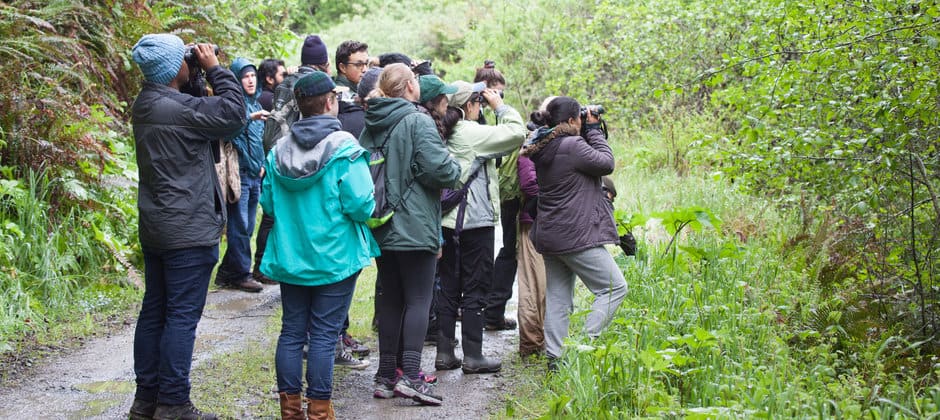Share this article
Remote teaching in the field in the midst of coronavirus
COVID-19 has affected everyone, and wildlifers are no exception. In this series, TWS is looking at challenges facing the profession due to the pandemic.
Teaching wildlife field courses is a difficult task for professors who have had to move their classes online due to the novel coronavirus pandemic. But some professors have developed advice for the switch — along with some faculty learning opportunities.
Humboldt State University is one of the institutions that’s wildlife department has decided to go fully online for the fall, and wildlife professors are finding ways to make classes meaningful for students working at their computers. Daniel Barton, an associate professor of quantitative population ecology at the university, conducted a study to see what worked best in online courses.
“In general, people see that more student-centered activities are more likely to be effective. The question is how do we do that?” he said.
Barton is publishing a paper in pre-print right now offering recommendations. After surveying 117 faculty members last spring, he found that instructors had a generally negative view of remote teaching. They listed the major barriers for distance learning of field topics including technology, student time, less engaging modality and geography or transportation.
But the results suggested that a few approaches were likely more effective than others. For example, respondents reported that sending students equipment to learn hands-on how it worked in the field, and engaging students in data collection remotely, was beneficial. “Instead of being like ‘here, do this with this thing,’ instructors can show them a video,” Barton said. Students then can then use the equipment sent to them and mimic what they see in the video, and even record their own video for peer feedback and assessment of their own learning.
In his paper, Barton offers a framework to help professors developing online classes that have a field component. Those courses likely involve identification and natural history, field techniques, data collection and study design. Barton suggests a combination of institutional support, such as providing the necessary equipment to students, and thoughtful remote course design, can help professors and students alike. He also recommends professors take into account other barriers, such as access to technology due to socioeconomic factors and the hazards students may face by engaging in field activities alone, when designing courses.
Barton said he and others are providing faculty development opportunities like workshops. These workshops will help faculty working to teach outdoor hands-on topics remotely during the summer and fall.
The research was mostly descriptive, said Barton, who is leading workshops this summer through the National Institute for Scientific Teaching and the Yale Poorvu Center for Teaching and Learning to help faculty teach outdoor subjects remotely. It asked respondents what they were facing in their classes right now. The next step, he said, is to ask more specific questions that provide better insight into how professors can succeed in the face of COVID-19 or any other incidents that force classes to go online in the future. He hopes these workshops might even help professors become better field instructors in general, because it forces them to re-think what they do and why, he said.
“This is not a feeling most researchers have, but I hope no one cares about this research we’re doing in 10 years,” he said. “I hope this only matters this year.”
Header Image: Humboldt State University students in a wildlife techniques field course watch a northern pygmy owl eat a song sparrow on a field trip to the Mendocino Coast in Spring, 2018. These are the types of learning opportunities that are on hold as a result of COVID-19. Image Courtesy: Dan Barton








